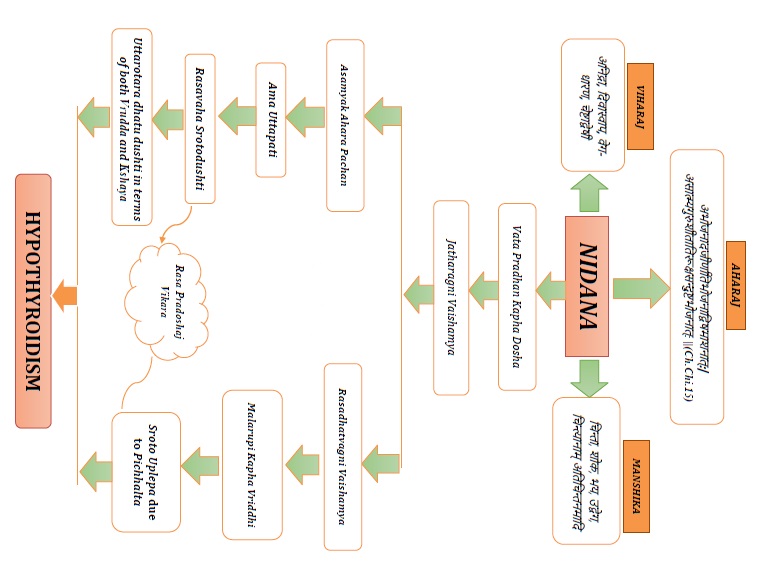Multidimenstional View of Hypothyroidism Through Ayurveda w.s.r to Anukta Vyadhi
Abstract
Hypothyroidism is a condition characterized by a lack of thyroid hormone (T3 and T4), which can be caused by a variety of factors. The prevalence of this condition is on the rise globally due to increased levels of stress and strain. The symptoms of hypothyroidism are studied in terms of imbalance of Dosha, Dushya, Srotasa, etc and an effort is made to obtain standard possible Samprapti and Samprapti Ghataka of the same disease. All Srotas are involved in the analysis of the signs and symptoms associated with hypothyroidism from the Ayurvedic perspective. The Vata Dosha and Kapha Dosha Vriddhi are elicited and Pitta Dosha Kshaya is seen. Here an attempt is made to understand hypothyroidism as a Vyadhishankarya from Ayurvedic point of view. Aims and Objectives: 1. To study the Samprapti of hypothyroidism through Ayurveda. 2. To study the Samprapti Ghataka of hypothyroidism through Ayurveda. Material and Method: Hypothyroidism has been studied using modern pathology textbooks from different authors, as well as looking up online medical research from places like PubMed, Google Scholar, and other national databases. The study of various Ayurvedic Samhita were made critically and an effort is made to understand the complete Samprapti and Samprapti Ghataka of hypothyroidism in terms of Dosha, Dushya, Agni, and Srotas etc. The modern lifestyle and sedentary lifestyle lead to aggravation of Vata Dosha, and Kapha Dosha cause the Jathragnimandhya with the formation of Ama, Rasadhatavagni depends on Jatharagni, so Dhatvagnimandhya occur and causes improper formation of Sapta Dhatu starting from Rasa to Shukra and improper Dhatu Vriddhi (especially Meda Dhatu). In Dhatvagnimandhya especially Rasa Dhatvagnimandhya leads to Sama rasa Vriddhi and over production of Mala of Rasa Dhatu i.e., Mala rupa Kapha Dosha Vriddhi. Majority of the Nanatmaja Roga of Kapha Dosha can be included as signs and symptoms of hypothyroidism.
Downloads

Copyright (c) 2023 International Journal of Ayurveda and Pharma Research

This work is licensed under a Creative Commons Attribution-NonCommercial-ShareAlike 4.0 International License.






